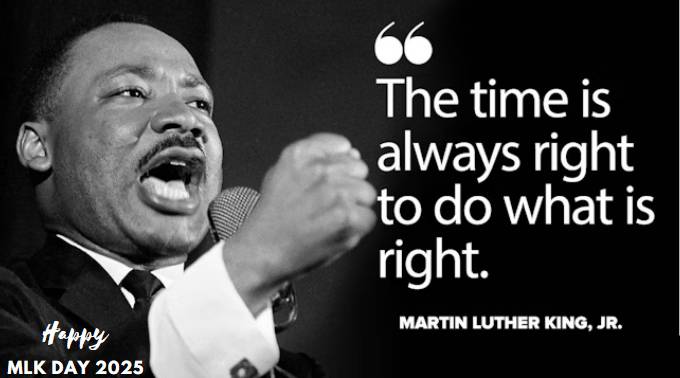Unknown Fact about Martin Luther King Jr Day 2025

Martin Luther King Jr. Day has become a staple in the American calendar a day dedicated to honoring the legacy of a man who championed equality, justice, and nonviolent resistance. While we often associate the holiday with iconic speeches and marches, there are plenty of lesser-known facts and stories that give a deeper insight into the man and the day that symbolize the fight for civil rights.
20 January Martin Luther King Day 2025
Martin Luther King Jr. Day holds a unique distinction among U.S. federal holidays. It is the first and only federal holiday dedicated to an African American figure and one that honors a civilian rather than a statesman or military leader. This reflects not only King’s monumental impact on American history but also the broader civil rights movement’s role in shaping the nation. But achieving this recognition wasn’t easy it required over a decade of activism. Proposed just four days after Dr. King’s assassination, the idea of an MLK holiday faced significant opposition. It wasn’t until 1983, nearly 15 years later, that President Ronald Reagan signed the bill into law.
However, even after federal approval, some states resisted. It took until 2000 for Martin Luther King Jr. Day to be recognized in all 50 U.S. states. For example, Arizona only adopted the holiday after threats of losing tourism and the NFL’s decision to relocate the 1993 Super Bowl to Pasadena, California. South Carolina, meanwhile, was the last holdout, finally signing the holiday into law in 2000 after years of debate.
More Than “I Have a Dream”
Most Americans associate Martin Luther King Jr. with his iconic “I Have a Dream” speech delivered during the historic March on Washington in 1963. Yet, Dr. King’s accomplishments extend far beyond this speech his contributions were multifaceted and revolutionary.
For instance, in 1964, Martin Luther King Jr. became the youngest person, at just 35 years old, to win the Nobel Peace Prize at the time. Not only did he receive the award, but he donated all $54,123 of its prize money to support civil rights organizations.
Additionally, King’s activism wasn’t solely focused on racial inequality. He was also a passionate advocate for addressing poverty and opposing global conflict, particularly the Vietnam War. His lesser-known “Poor People’s Campaign,” launched in 1968, aimed to address economic justice through policies that cut across lines of race, pushing for living wages, affordable housing, and labor rights for America’s poor. This campaign was a testament to his holistic view of justice—one that transcended race to encompass humanitarian issues.
MLK Day as a Day of Service
One of the most inspiring aspects of Martin Luther King Jr. Day is its evolution into a National Day of Service. The idea is rooted in Dr. King’s enduring vision of building community through collective action, embodying his belief that “Life’s most persistent and urgent question is, ‘What are you doing for others?’”
The transformation of MLK Day into a day of service gained traction in 1994, when Congress passed the King Holiday and Service Act. Today, organizations nationwide encourage people to honor King’s legacy by volunteering, whether through food banks, community clean-ups, or mentoring programs. It has moved from being a day “off” to a day “on,” as communities come together to show solidarity by bettering their neighborhoods.
Unknown Fact about MLK Day 2025
Beyond parades and speeches, Martin Luther King Jr. Day includes traditions and symbols you might not know about.
1. Bell-Ringing Ceremonies
Many communities and institutions honor Dr. King by conducting bell-ringing ceremonies, an homage to the famous lines from his “I Have a Dream” speech “Let freedom ring.” These ceremonies often happen at historical landmarks, schools, or places of worship, serving as both a reminder and a call to action for building a united and just society.
2. The Mural Movement
Another way Dr. King’s legacy is celebrated is through the creation of murals in various cities. Large-scale public art installations preserve and showcase King’s likeness, often accompanied by quotes from his speeches. Cities such as Atlanta, Boston, and Los Angeles have turned to art to keep his message alive and visible.
3. A Global Recognition
While Martin Luther King Jr. Day began in the United States, its significance resonates globally. Some nations, such as Canada and Japan, also organize events in solidarity, highlighting his universal values of peace, equality, and social justice.
The Ongoing Legacy
Dr. King’s work remains as relevant today as it was 60 years ago. Conversations around racial equality and justice, voter suppression, and economic inequality highlight the unfinished business of his movement. Holidays like Martin Luther King Jr. Day serve as a critical reminder to honor his vision through action continuing to engage with the challenges he worked so tirelessly to address.
If you’re looking for meaningful ways to commemorate the day, here are some ways to get involved:
- Volunteer with a local organization or participate in a service event in your area.
- Learn about civil rights history through books or documentaries (titles like Selma or Eyes on the Prize are a great start).
- Support initiatives or nonprofits that focus on voter rights, equality in education, or labor policies.
- Reflect on Dr. King’s writings, like his Letter from Birmingham Jail, to gain deeper insights into his philosophy of nonviolent resistance.
